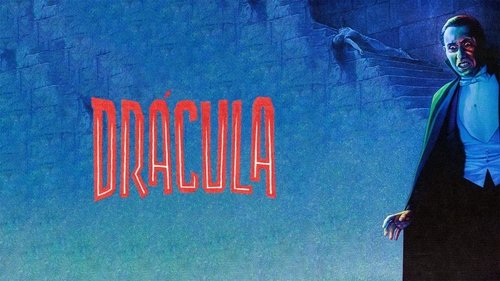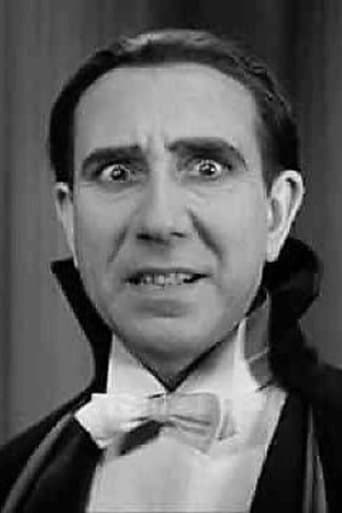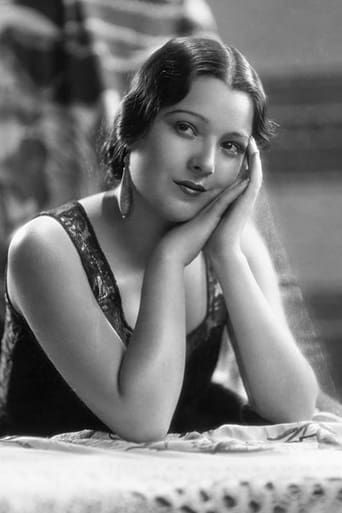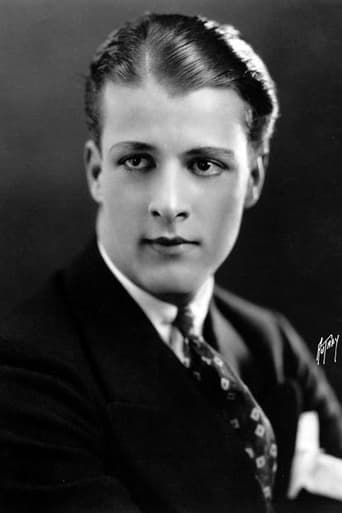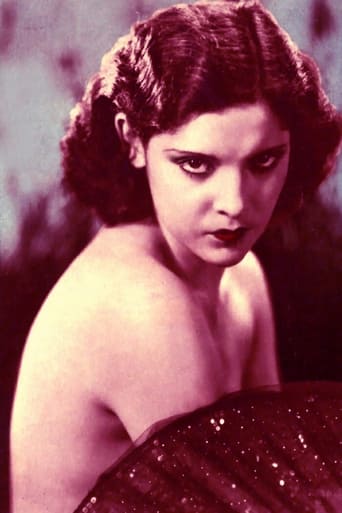Ghoulumbe
Better than most people think
Billie Morin
This movie feels like it was made purely to piss off people who want good shows
Blake Rivera
If you like to be scared, if you like to laugh, and if you like to learn a thing or two at the movies, this absolutely cannot be missed.
Mandeep Tyson
The acting in this movie is really good.
Nigel P
Whilst Universal films toiled during the days, Director George Melford and his team of Spanish film-makers worked through the nights using the same sets and adapting their own version of the story via the 1924 stage version.It is irresistible to compare this version with the Bela Lugosi-headed version, but I'll also try to review this film in its own right. Spanish Dracula is played by Carlos Villarias, the only member of the crew allowed to see the rushes of the Universal rushes so he could imitate Lugosi's mannerisms. This might do Villarias a disservice – there could only ever be one Lugosi performance, which is a very singular, much-copied affair that caused such a sensation that he was cursed (or blessed) to play horror characters for most of his career. Villarias could be seen as a tribute act – lots of grimacing and lizard-like movements, but little of the presence. He succeeds over Lugosi during the second half, where The Count is required to mingle with high society. Whereas Lugosi's mannerisms were so extreme, the polite responses around him were rendered ridiculous, the Spanish Conde makes some effort to ingratiate himself with the company. Villarias should not be criticised for not being Lugosi in my view, and he is perfectly fine in the role.Pablo Alvarez Rubio's Renfield is possibly more manic than was Dwight Frye's (but lacks the subtle fragility), and it is reassuring to know that Renfield's warden, Martin (Manuel Arbó), behaves just as inappropriately as his 'cockney' counterpart. Of course, it is difficult to appreciate the performances fully as I cannot speak Spanish, but it seems also that Eduardo Arozamena as Van Helsing, whilst authoritative, is not as stuffy as Edward Van Sloan's fastidious version. Kudos to Barry Norton for at least turning up to play the unrewarding and forgettable role of Juan Harker.The biggest contrast might well be the character of the main female victim. Helen Chandler's character Mina is a fragile, delicate creature – Lupita Tovar's Eva is more full-blooded, more sensual. Both versions of this character are excellent to my mind (Tovar died in 2016 aged 106).Whereas Melford's version doesn't quite measure up to the saturation levels of spooky atmosphere the American version displayed, it enjoys a far more watchable second half. The Direction is more assured, more filmic and less like a stage play. Villarias' first meeting with Renfield, after several lingering distant shots earlier on, is quite spectacular. The camera leaps from Renfield's viewpoint and rapidly tracks up the huge staircase to find El Conde perched and waiting, just in front of an equally impressive spider's web. The Castle remains a tremendous set, and is explored beautifully by Melford's camera, its huge scale revealed by some terrific camera angles. Even Dracula's rising from the coffin is handled imaginatively: always an awkward moment (we never see Dracula's undignified stepping out), here he merely rises from behind the open casket, framed by billowing smoke (clearly standing behind the coffin, not in it), as the lid slowly closes. Also, the welcome inclusion of the 'woman in white' is brief, but chilling.Is this 'better' than Tod Browning's version? Who cares? It is stagey, talky and brilliant. That's all the matters.
DarthVoorhees
The Spanish edition of 'Dracula' from 1931 has become something of a legend. It came at a time and to an audience who had seen all the Universal films religiously with multiple viewings and so in a lot of ways it feels contemporary and fresh. It is getting past this freshness that becomes the tricky part in critiquing it and comparing it to the Tod Browning version which is the sole reason this film exists. Famously shot when the English language cast left home for the night this version might actually be better than the iconic Lugosi original if only from a technical stand point. This 'Dracula' has a lot of frightening imagery and some extremely impressive sequences but I still feel like it is in the shadow of Browning's picture( and I may be in the minority for saying that.) That isn't to say however that this film isn't without merit. It too is a masterpiece of the golden age of horror. Comparisons are really an inevitability when it comes to discussing this film and they really should be. This movie is in some ways a lot stronger film. It's a lot more elaborate and drawn out and the peripheral cast is a lot more talented and into their roles. It doesn't quite have that slow hypnotic build that the best moments of the Lugosi film have but it is a very effective horror film especially when it wishes to stage it's menace. A breathtaking sequence that is among the best of this era is when Carlos Villiarias' Count is introduced for the first time. It doesn't have that slow hypnotic build that Browning and Karl Freund invoked it draws you in flamboyantly into a very different and loud Dracula. I for one loved it. It's a movie that savors it's horrors.One of the reasons this Dracula feels the most contemporary is that it actually benefits from sort of escaping the scrutiny the censors had. The sexual undertones are a lot more blatant and the violent implications are a lot more gruesome. This Dracula knows it's all about sex from Lupita Tovar's dresses to the wide eyed gaze of Carlos Villiarias. The one thing the film doesn't have is Bela Lugosi and really I feel it's what keeps the film from being the superior vampire classic. Villiarias is a filthy Dracula with a gaze like rape, no charm and no subtlety like Lugosi had. Lugosi's take is just more romantic and fascinating. Villiarias used to get my vote for worst screen Dracula and although I think that was an unfair assessment I think he does have some moments where he might seem a little too cartoony and wired in the part. He's more like a Renfield than a Dracula. But I've come to appreciate it, especially when you look at all the different interpretations of the character. He's not a Lugosi mold vampire but he's still an effective terror figure. I'd say he's much closer to Max Scherk than a lot of other interpretations of Dracula and that is praise worthy. The animal vampire is just as interesting as the suave cultured one. Lugosi is the better of the two but Villiarias is good too. This film is much more than a companion piece. It is a fascinating and frightening horror film in it's own right. Rather than use it as a critique of the Browning film I think it should be used to see what stylistic differences were made. I think that is where the film's staying power comes from.
TheLittleSongbird
It is hard to say which is the better version of the Todd Browning version and this, both have flaws but both has many things to recommend. There are things here that are done better here than in Browning's, like some of the storytelling and how it was made, but Browning's had the better Eva/Mina, Van Helsing and especially Dracula(the Renfield interpretations personally rank the same).Visually this version is an absolute treat, the cinematography is superb and the editing is much improved over Browning's version as is George Melford's exciting direction over Browning's, the sets are wonderfully Gothic too, especially the genuinely creepy Trasylvanian castle. Of individual scenes the standouts were the smoke with Dracula rising out of his coffin, Renfield and the fly and the terrific final shot. The eerie music score compliments the atmosphere beautifully and the dialogue flows reasonably well.The storytelling is very compelling on the whole, as well as those three standout scenes the relationship between Eva and Seward is incredibly affecting, the atmosphere is very spooky, there is an exciting climax and it does make more sense than Browning's with things better explained thanks to the stronger editing. It is not perfect this said, the film is overlong and does drag as a result as expanding on these loose ends, the first scene with Dracula is scarier in the Browning film. The acting is a mixed bag, with the strongest performances being Lupita Tovar as a lively Eva, José Soriano Viosca's sympathetic Seward and particularly the chillingly insane Renfield of Pablo Álvarez Rubio. Eduardo Arozamena plays Van Helsing more than reliably if not as memorable as Edward Van Sloan or Peter Cushing. Barry Norton however is very stiff as Juan and Carlos Villarias tries far too hard as Dracula, his facial expressions verging on cartoonish and he lacks the aristocratic charisma and suave menace that Bela Lugosi and Christopher Lee had.All in all, a worthy version but a long way from perfect. A very high 7/10 Bethany Cox
Dan Franzen (dfranzen70)
A lot of people probably don't realize this, but while Tod Browning's classic Dracula, starring the inimitable Bela Lugosi in his breakout role, was being filmed, a Spanish-language version was being filmed using the same sets - at night. The result is a movie that's about 30 minutes longer than its English-language counterpart, with more-nuanced characterizations and some additional plot threads from the story.Count Dracula (Carlos Villarias) receives his solicitor Renfield (Pablo Alvarez Rubio) in his dark, crumbling, in-need-of-a-maid castle. Renfield carries with him papers that grant Dracula possession of Carfax Abbey in London. After signing the papers, the Count bids his guest good night. Next thing Renfield knows, he's in the hold of a ship foundering in a storm on the high seas. Dracula has risen from his coffin and helped himself. In London, Renfield is taken to a sanatorium and placed under the care of a Dr. Seward (Jose Soriano Viosca), who happens to have a lovely daughter named Eva (Lupita Tovar) - known as Mina in Stoker's story. Also on the scene are Eva's boyfriend Juan (Barry Norton) and a visiting scientist named Dr. Van Helsing (Eduardo Arozamena), and the fight is on for Eva's soul and blood.The film was directed by George Melford, who didn't speak a word of Spanish. Even so, he elicited fantastic performances from his cast, notably Rubio, Tovar, and Arozamena. There's more melodrama (pregnant pauses, etc.) than occur in most English-language movies, but the women dress a tiny bit more provocatively, particularly for 1931, so it sort of evens out.I had the opportunity to watch this with live musical accompaniment from Gary Lucas, who played with (among others) Captain Beefheart. Lucas came up with his own compositions that properly fit the mood and setting of each scene; the original had nothing in the way of music save for a song played over the opening credits. And there Gary was, right on stage with his bottleneck guitar and other instruments. He's accompanied horror films before - earlier that afternoon he did Carl Theodor Dreyer's Vampyr, to similar great acclaim. It's true that nowadays a movie has far too much music, enough to drown out such quaint subtleties as plot, but the older ones simply couldn't afford to record music, not during the Great Depression. Lucas' work here is admirable and supportive of a classic film.
